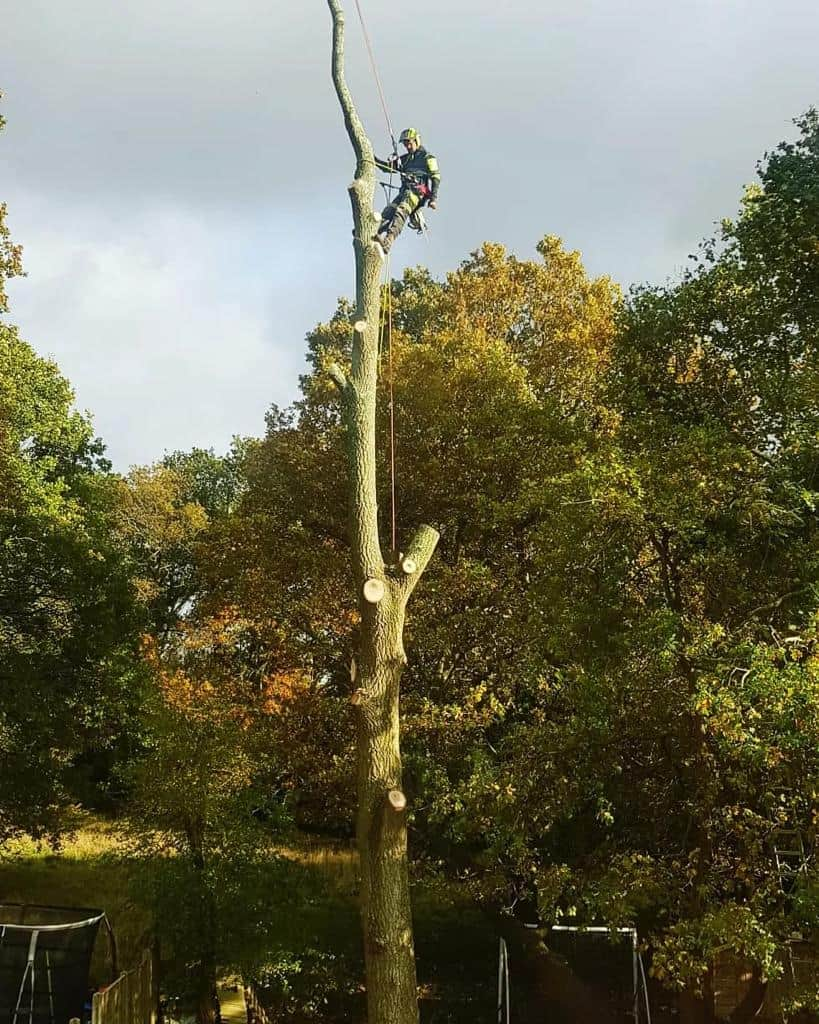Introduction: Maintaining well-trimmed hedges enhances the aesthetic appeal of your property and promotes the health and growth of your plants. We understand the importance of proper hedge-cutting techniques at LM Tree Surgery Lee-on-the-Solent. In this comprehensive guide, we’ll cover everything you need to know to master hedge cutting and keep your hedges looking their best throughout the year.
Why Hedge Cutting Matters
Hedges serve various purposes in gardens and landscapes:
- Privacy and Security: Well-maintained hedges create natural boundaries, offering privacy and security.
- Aesthetic Appeal: Neatly trimmed hedges enhance the overall appearance of your property.
- Wind and Noise Reduction: Dense hedges can act as windbreaks and reduce outdoor noise pollution.
- Wildlife Habitat: Hedges provide shelter and food for birds, insects, and other wildlife.
Best Time to Cut Hedges
Timing is crucial for successful hedge cutting:
- Spring: Ideal for rejuvenation, pruning and shaping before the growing season.
- Summer: Regular maintenance to keep hedges tidy and promote dense growth.
- Autumn: Light trimming to prepare hedges for winter and prevent overgrowth.
- Winter: Pruning when hedges are dormant, focusing on structural adjustments.
Essential Hedge-Cutting Tools
Having the right tools ensures efficient and precise hedge cutting:
- Hedge Trimmer: Choose between electric, cordless, or petrol-powered trimmers based on hedge size and accessibility.
- Hand Shears: Ideal for detailed shaping and pruning of small or formal hedges.
- Pruning Saw: This is for cutting thicker branches that hedge trimmers cannot handle.
- Ladders and Safety Equipment: Ensure safety while reaching tall hedges.
Basic Hedge Cutting Techniques
- Trimming
- Start at the Bottom: Trim the bottom of the hedge wider than the top to allow sunlight to reach lower branches.
- Use Smooth, Fluid Motions: Move the trimmer or shears in a sweeping motion for even cutting.
- Check for Level: Use a string or guide to ensure a straight and level cut, especially for formal hedges.
- Shaping
- Create a Template: Use stakes and strings to mark the desired shape before cutting.
- Work from Outside: Trim the outer edges first, gradually working towards the centre for a balanced shape.
- Step Back Regularly: Assess the hedge from a distance to maintain symmetry and overall appearance.
- Pruning
- Remove Dead or Diseased Branches: Cut back to healthy growth to prevent disease spread.
- Thin Out Dense Areas: Improve airflow and light penetration by selectively removing crowded branches.
Special Considerations
- Avoid Overcutting: Never remove more than one-third of the hedge’s growth in a single session to avoid stress and promote healthy recovery.
- Safety First: Use gloves, safety glasses, and sturdy footwear to protect yourself from debris and sharp tools.
- Dispose of Trimmings Properly: Clean up trimmings promptly to prevent them from smothering the hedge or lawn.
Aftercare Tips
- Watering: Provide adequate water after cutting, especially during dry spells, to help the hedge recover.
- Fertilisation: Apply a balanced fertiliser to encourage new growth and maintain health.
- Monitor Growth: Regularly inspect hedges for signs of pests, diseases, or uneven growth requiring corrective trimming.
Conclusion: Mastering hedge-cutting techniques is essential for maintaining healthy, attractive hedges that enhance your property’s landscape. Whether shaping a formal hedge or maintaining a natural screen, following these guidelines will help you achieve professional results.
Call us on: 023 8235 6393
Click here to find out more about LM Tree Surgery Lee-on-the-Solent
Click here to complete our contact form and see how we can help you with your tree’s needs.

